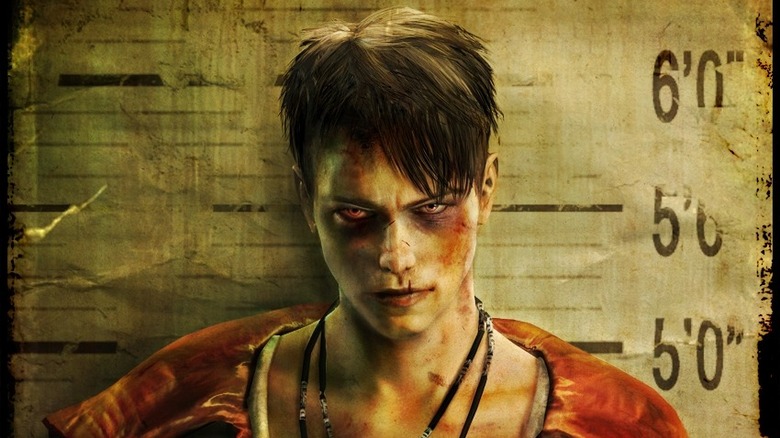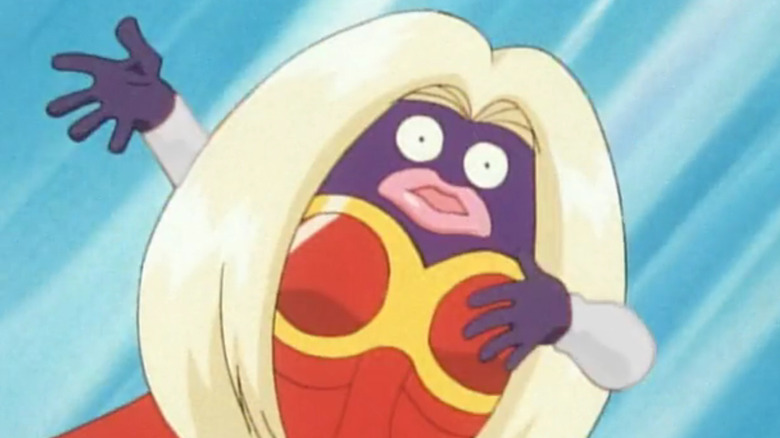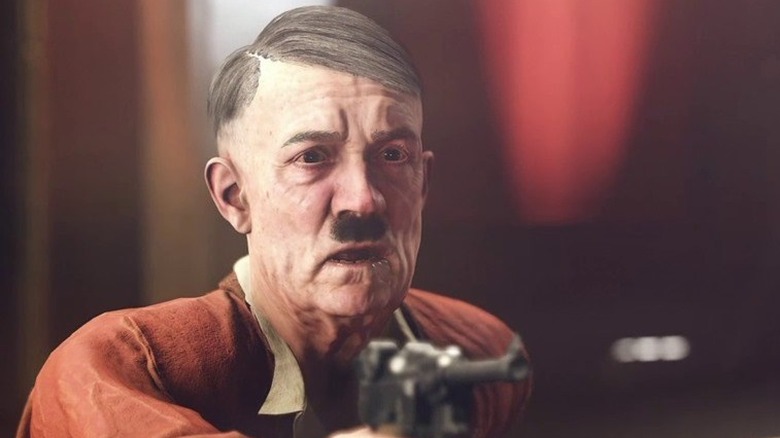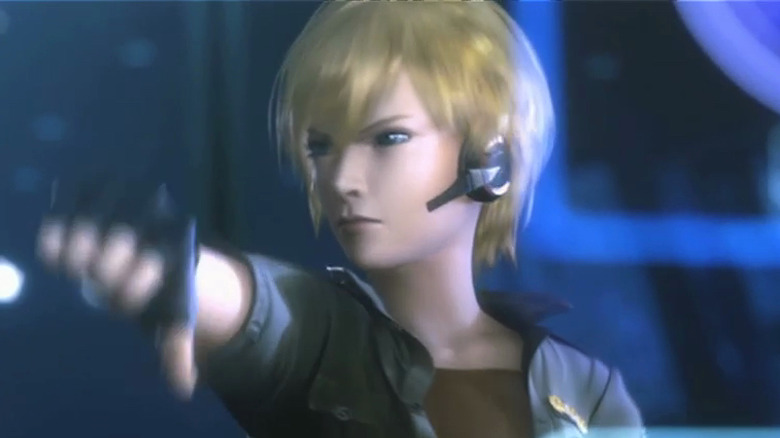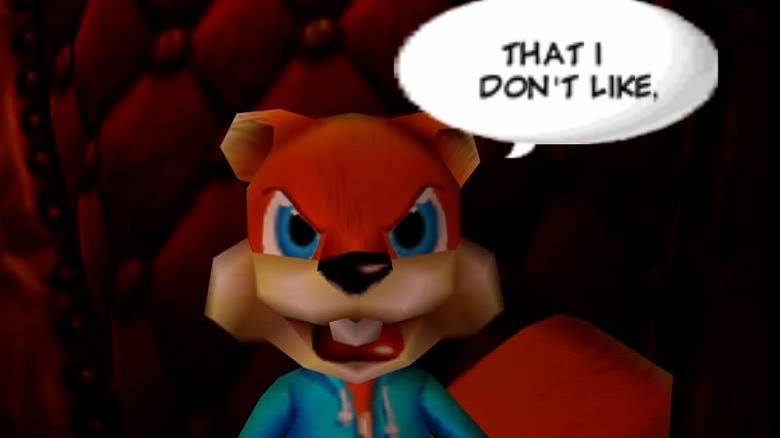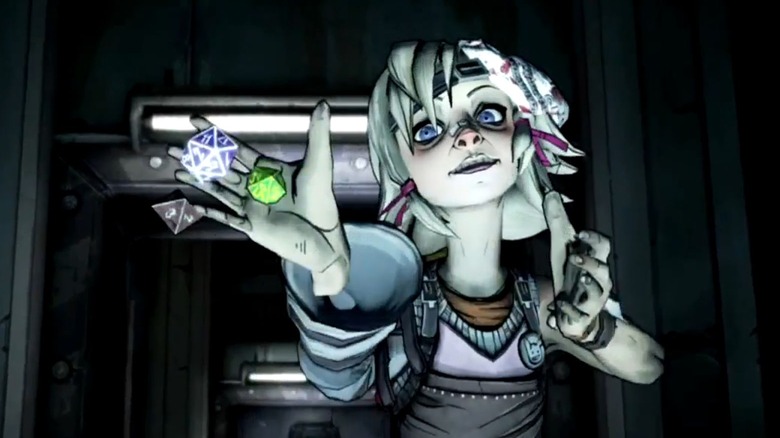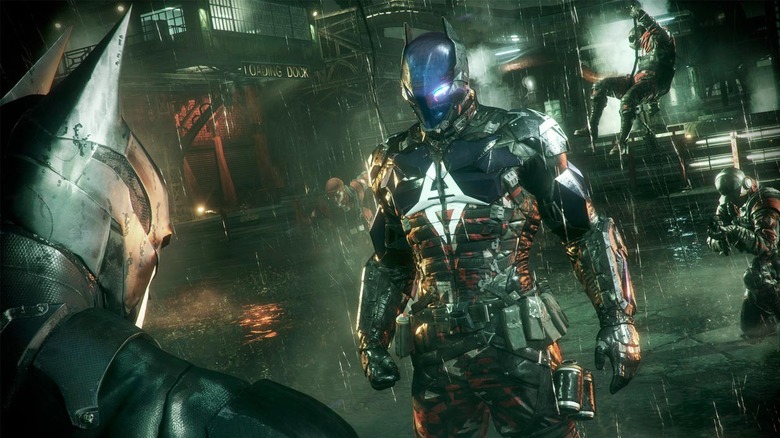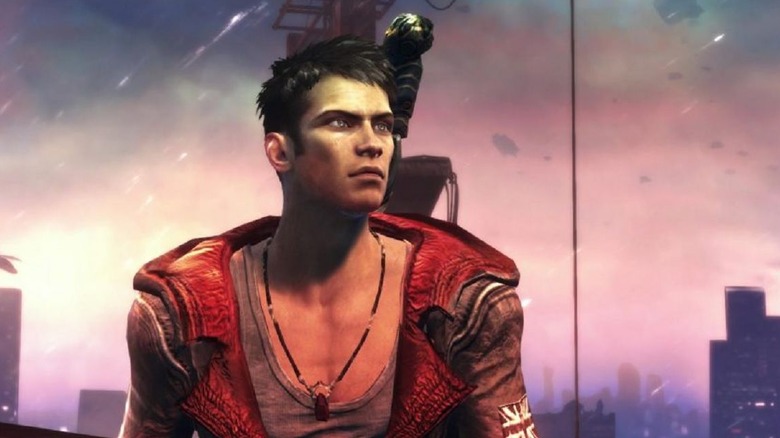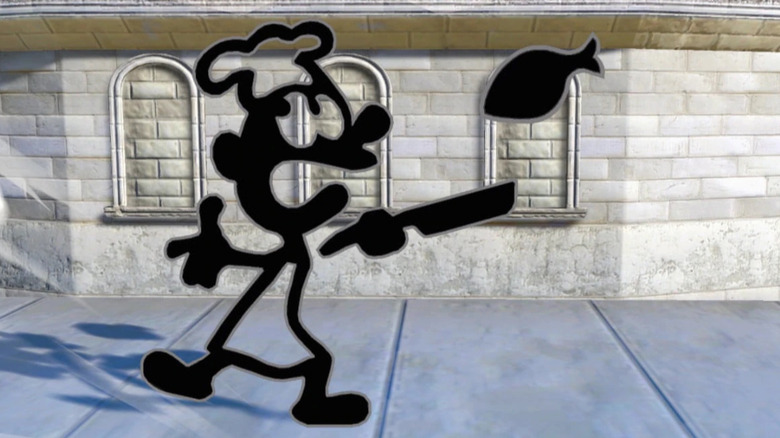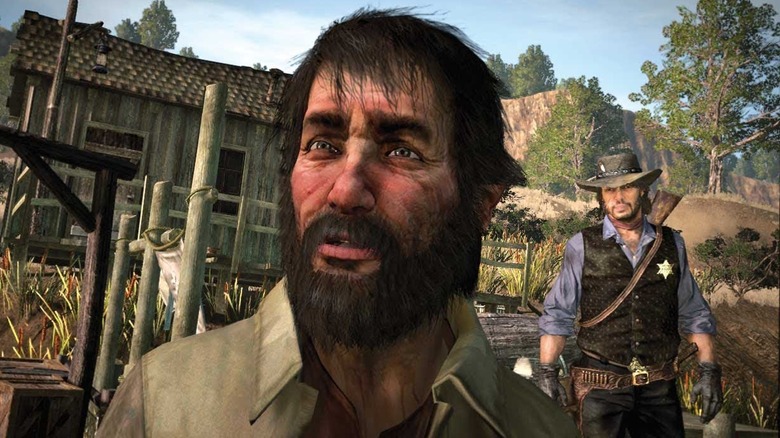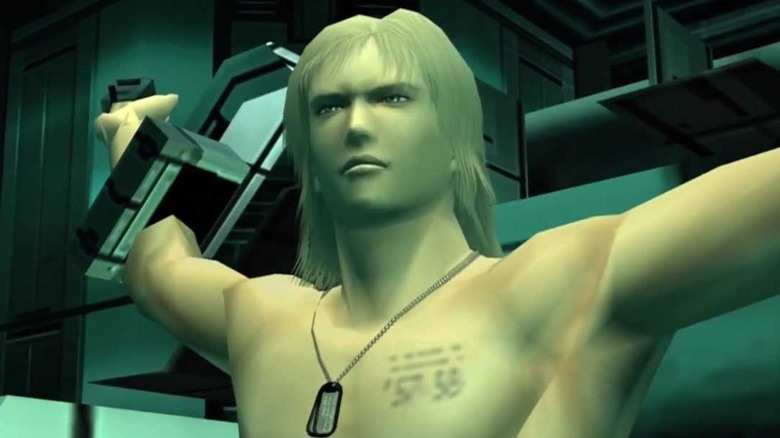The Most Controversial Characters In Games
Listen, not every single character is a winner. For every Sonic the Hedgehog or Mega Man, there's must be an Awesome Possum or Zero the Kamikaze Squirrel. Sadly, lightning isn't caught in the bottle every time. Mistakes will be made, and bad characters are just a fact of fictional life. Sometimes, though, characters can go beyond being simply bad and can stir up some real controversy. Whether it's due to poor characterization, iffy design, or the subversion of fan expectations, there occasionally comes a character that people just aren't cool with.
With all of that in mind, the following list will take a look at these pariahs of the gaming world, many of whom were even featured in pretty decent games. Some of these characters deserved better, while some of them probably would have been better off staying in someone's sketchbook and never seeing the light of day. Prepare yourselves; this isn't going to be pretty.
Jynx - Pokémon series
To Nintendo's credit, this is one that the company took seriously and attempted to fix. In the first generation of Pokémon games and several episodes of the anime, the psychic Pokémon called Jynx featured a very controversial design. Its pitch black skin and large red lips reminded many people of stereotypical, outdated "blackface" caricatures.
Rather than simply dropping the offending Pokémon entirely, Nintendo decided to change the look of the character going forward. Starting with the second generation, Jynx was recolored with purple skin. Also, as noted by Hypable, not only was Jynx recolored for the Pokémon anime episode "Holiday Hi-Jynx," but the episode in question was actually omitted from future reruns and DVD releases of the series.
In 2016, when the games that originally kicked off the franchise, Pokémon Red and Blue, received digital releases, Jynx's character sprite from those games had been updated to reflect the newer coloration. In this way, Nintendo not only addressed the concerns and criticism, but they went the extra mile and made corrections going forward.
Adolf Hitler - Wolfenstein series
Adolf Hitler is ... well, he's obviously not a popular guy, so it's not unexpected that the mad Führer's inclusion in a video game would cause a stir. In fact, Germany exerted quite an effort in the years following World War II to scrub Nazi symbolism from the public consciousness, including removing the Swastika from buildings and enforcing strict bans on Nazi-related content in popular culture. Even films that didn't receive censorship but featured Nazi imagery, like 2004's Downfall, received significant backlash for their portrayals of the Nazi party.
Fast-forward several decades, and the content ban was still very much prevalent in Wolfenstein: The New Order, Bethesda's reboot of the Wolfenstein series. The first game in the Wolfenstein series to be officially released in Germany, the German version of The New Order removed references to the Third Reich and replaced the Swastika with a different symbol. Things reached a boiling point when Wolfenstein 2's appearance from Hitler himself was edited, removing his mustache and the initials on his monogrammed bathrobe in the game's German release.
Outcry from gamers led to Germany's Entertainment Software Self-Regulation Body, also known as the USK (essentially their version of the ESRB), to reevaluate their position on the controversial imagery, approaching them through the same lens they would with films or print media. The content ban was lifted, with the USK agreeing to judge video games on a case-by-case basis, rather than instituting a full-on ban on the offending imagery.
Samus Aran - Metroid: Other M
Samus Aran is one of the most beloved heroines in video game history. She's tough, clever, and able to blast her way out of every situation. That's why her portrayal in the 2010 Wii game Metroid: Other M has been such a point of contention for longtime fans. In Other M's cutscenes, Samus' character is basically reduced to a stereotypical damsel in distress. At one point, she even breaks down in front of her longtime rival Ridley and is unable to fight.
This disparity between the narrative and the players' actions was highlighted by IGN, who said, "While under the player's control, she is exactly the Samus of old, fearlessly dusting off dozens of enemies at once, all without losing her cool. The moment a cutscene begins to roll, however, she is transformed into someone completely new and unrecognizable." IGN also succinctly noted how wrong Other M got Samus' personality: "Where she once broke gender stereotypes, in Other M she exemplifies them. Her independence is reduced to subservience, her fearlessness to panic."
This portrayal is even worse when placed within the chronology of the series, as Samus goes from the badass world-killer of Super Metroid to the frightened rabbit of Other M and back to the parasite-absorbing warrior of Metroid Fusion. In a game full of baffling narrative and gameplay decisions, this mistreatment and tone-deaf re-characterization of Samus was easily the biggest issue.
Conker - Conker's Bad Fur Day
Conker's Bad Fur Day blew people's minds when it came out, and right at the center of that mind-explosion was its adorable lead character, the titular Conker. An adorable creation with big, bright eyes a fluffy tail, Conker was best known at the time for appearances in Diddy Kong Racing and the kid-oriented Conker's Pocket Tales. Conker looked like something out of a Disney film, rather than the South Park-esque adventure he'd eventually inhabit.
In an interview with IGN, the game's lead artist, Chris Seavor, said that his team "were basically given no boundaries" while designing Bad Fur Day. IGN points out that it was this lack of censorship that resulted in a hilarious game that used parodies of major Hollywood films for its set pieces, as well as "graphic violence, sexual innuendos, drug abuse, and LOADS of toilet humor." Naturally, this extra dirty game from the normally family-friendly Nintendo, as well as the lead character's cutesy design that was totally at odds with the game's content, drew quite a bit of ire.
As noted by the LA Times in an article on the controversy, KB Toys refused to carry the game in their stores, while parents expressed shock and disgust toward Nintendo. One mother compared the situation to being "like Disney releasing pornography." One can't help but wonder if the reaction would have been less intense had Conker's Bad Fur Day been released by any company other than Nintendo.
Tiny Tina - Borderlands series
Since she's gone on to be something of a poster girl for the quirky shooter franchise's esoteric sense of humor, it's easy to forget that Tiny Tina's first appearance in Borderlands 2 ruffled quite a few feathers. Introduced as a young explosives expert, Tina was instantly memorable for her fast-paced dialogue and seeming lack of social awareness. However, there was one thing about Tina in particular that rubbed some folks the wrong way, as much of her dialogue was seen as a form of cultural appropriation.
This issue came to a boiling point when Michael Sacco of Cryptozoic Entertainment tweeted that Tina's use of ebonics "has got to go." While many others chimed in to agree with Sacco, Borderlands 2's lead writer, Anthony Burch, threw a bit of gasoline on the fire when he responded, "Well, it's not going to [change]."
Though Burch's initial reaction seemed somewhat aggressive, he did respond to further criticism by saying, "The last thing I want to be is exclusionary or prejudiced, so if Tina truly is problematic I'll change her." In Tiny Tina's Assault on Dragon's Keep, a DLC for Borderlands 2, Tina seemingly references the controversy by saying she's "not racist." However, the folks at Gearbox Software maintain that this line was written before the controversy first rose. After all of that, Michael Sacco resigned from Cryptozoic due to flak he received from his comments toward Burch. We'll see what happens when Tiny Tina returns in Borderlands 3.
The Arkham Knight - Batman: Arkham Knight
Forget about Batman for a second (that felt weird to say): the Arkham Knight's greatest enemy is actually expectation. The deck was stacked against this international militia leader from the very beginning. Even before Batman: Arkham Knight was released in stores, it was theorized that the titular Arkham Knight was the game's adaptation of the character Red Hood, aka Jason Todd. Still, Rocksteady insisted that the Knight was a brand new character, saying, "We hadn't in the previous games introduced someone new to the universe." This was presumably their opportunity to do so, teaming with DC Comics' Geoff Johns in creating the "new" villain.
However, about halfway through the game's story, Batman flashes back to watching the supposed death of his second Robin, Jason Todd. It was at this point that gamers realized they'd been duped. Heck, when the Knight is finally unmasked, he immediately dons a red mask before going back into battle, just to hammer it home that the Knight was only technically a new character. This was just an alternative origin story for a character who'd been around in the comics for years, the "Arkham Knight" identity being the only new aspect. As Forbes pointed out, "It works within the game, but it was more than a little deceptive for Rocksteady to insist his identity would shock and amaze us all." No matter which way you cut it, the twist was lame and fans were right to feel duped.
Dante - DmC: Devil May Cry
Though some gamers have come around to seeing the positive aspects of Ninja Theory's divisive reboot of the Devil May Cry series, there's one aspect that will always be inescapable. From the moment it was first seen, many fans absolutely hated the ground-up redesign of Dante, the iconic half-demon hero of the Devil May Cry franchise. It wasn't just the cosmetic differences, either; Dante's fun quips had been replaced by a heaping helping of swear words, seemingly at odds with the original series' tone.
Ninja Theory certainly didn't help matters when their DmC presentation at the 2013 Game Developer's Conference used some fairly curious (and frankly, offensive) ways of communicating how this wasn't your daddy's Dante. Amidst a slideshow of images illustrating Dante in different locations and situations, they used a still from Ang Lee's Brokeback Mountain with Dante photoshopped in-between Heath Ledger and Jake Gyllenhaal. It has been argued that this was meant to illustrate how Dante would appear in a Western setting, but the choice of movie makes this claim highly suspect. It certainly came across as an attempt at saying their Dante was somehow inherently straighter than the Dante we've come to know. Not a good look for Ninja Theory.
Whatever the reasoning, fans weren't particularly enthused by this new take. 2019's Devil May Cry 5 returned to the franchise's original timeline, leaving Nü-Dante in the past.
Mr. Game & Watch - Super Smash Bros. Ultimate
Mr. Game & Watch, for those unfamiliar, is the mascot of a series of handheld games made by Nintendo in the '80s and '90s, some of which recreated arcade games and others which were original titles. Mr. Game & Watch was officially given his name when he was added to Super Smash Bros. Melee as a playable character. Possibly the most interesting aspect of his character in the Smash Bros. series is that his many attacks manifest as animations referencing different installments of the classic Game & Watch games. Unfortunately, one of these animations didn't go over well in 2018.
The controversy arose when Mr. Game & Watch showed off a fire-based move during a Japanese livestream of Super Smash Bros. Ultimate, which included the character in a loincloth with a feather on his head, reminiscent of problematic "native" imagery. As pointed out by Screen Rant, the way this attack was depicted is based upon the 1982 video game Fire Attack. Fan backlash was immediate, but to Nintendo's credit, they didn't simply try to sweep this faux pas under the rug. In a statement from Nintendo, they explained that they had actually planned on releasing an update that removed the offensive animation, but had not yet done so. "The original game on which this depiction of the character is based was released more than three decades ago and does not represent our company values today," they explained.
Irish - Red Dead Redemption
Though Rockstar's Red Dead Redemption series is a critical darling, not all of its characters are loved equally. In fact, one fellow in particular was seen as an embarrassing, outdated stereotype. "Irish" is a supporting character who is first seen being woken from a drunken stupor by having his head dunked into a watering trough. It's not terribly dignifying and it only gets worse from there, as the character's main contributions to the storyline involve moments where he runs away at the first sign of danger and literally shoots himself by mistake.
In an article on the failures of the character, Sean Clerkin of Geek Ireland wrote, "Any way you slice it, 'Irish' is poorly written, poorly acted, and terribly cast ... an unlikable, irritating coward. Perhaps this is intentional, in which case I give Kudos to Rockstar for creating a character who's so easy to hate." The character also found himself at the center of a piece by The Irish Times that examined Irish stereotypes in popular culture.
It seems as though Rockstar took these criticisms to heart, however. The addition of Irish character Sean MacGuire to Red Dead Redemption 2 was seen as a major step up in terms of writing and representation, with Eurogamer's Cian Maher praising MacGuire's authentic Dublin accent and mannerisms, even going so far as to call MacGuire "the best Irish character in a video game yet."
Raiden - Metal Gear Solid series
Honestly, is there a more divisive character in gaming history than Metal Gear Solid's Raiden? The poor fella had the deck stacked against him from the beginning, as his very existence was revealed as the long payoff to a set-up from MGS series mastermind Hideo Kojima. Early demos for Metal Gear Solid 2: Sons of Liberty featured franchise hero Solid Snake as the main focus, but when excited fans bought the game, they discovered that those demo sequences were all from the first chapter, which ends with Snake's apparent death. Afterwards, players were thrust into the role of new character Raiden for the rest of the game, which led to many people feeling cheated.
These days, Raiden does have his defenders. In fact, in a retrospective on MGS2, HeadStuff points out that the player's feelings of betrayal toward the switcheroo were likely built up by Kojima in order to help them sympathize with Raiden, who was similarly manipulated and struggled to find his own identity. Kojima responded to Western audience's complaints over Raiden's "androgynous" appearance in an odd way, by creating a cowardly and effeminate character in Metal Gear Solid 3: Snake Eater who is modeled and named after Raiden.
Raiden eventually led another game, the hack-and-slash spinoff Metal Gear Rising: Revengeance, which still received flak from fans over its deviation from the normal MGS formula. Raiden just can't catch a break.

